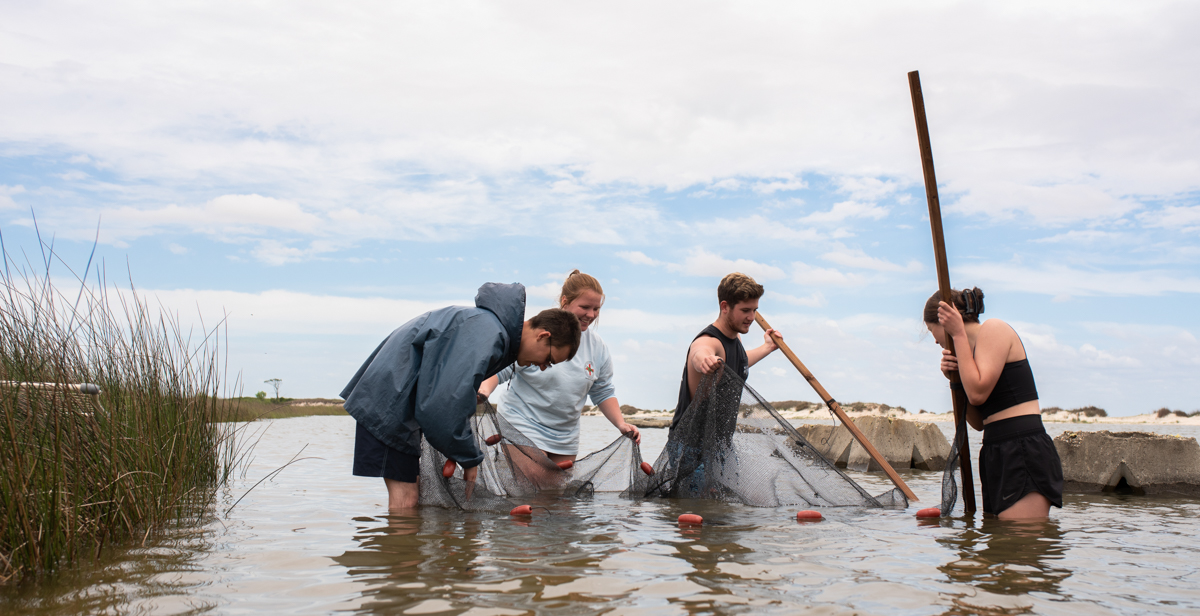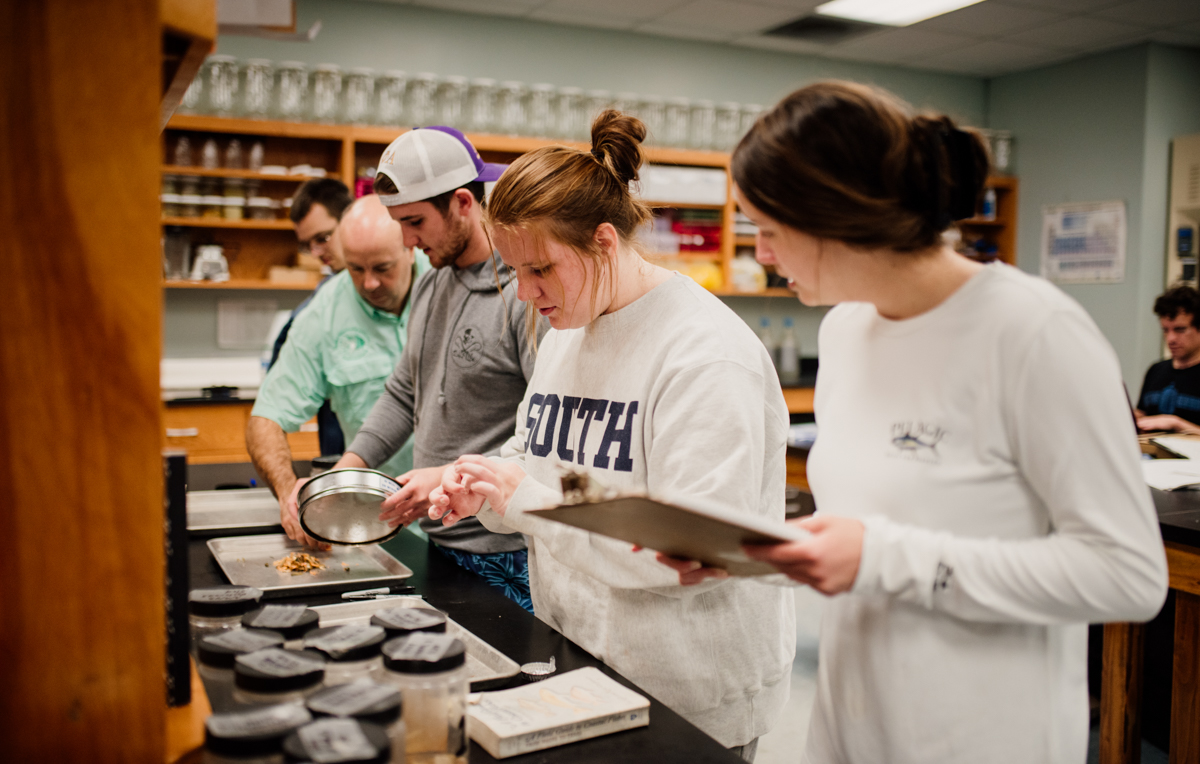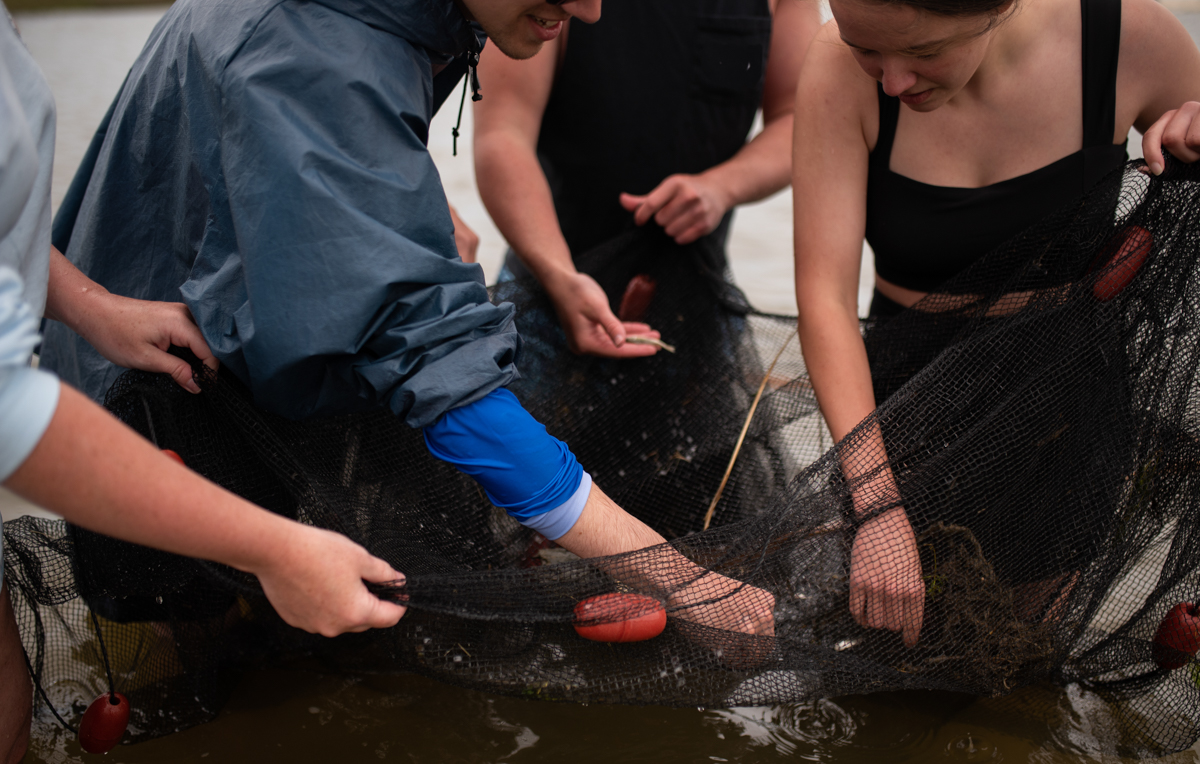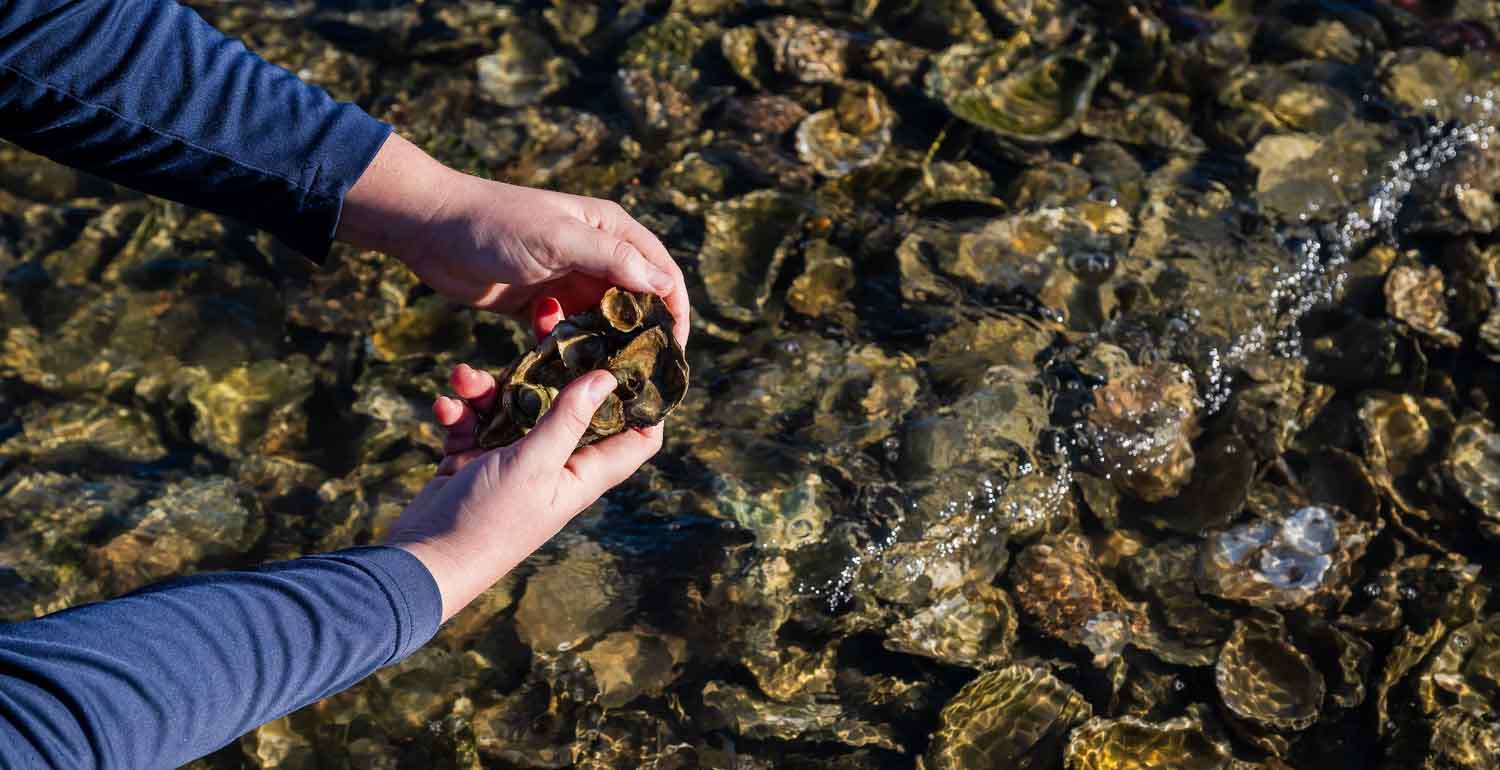South Seamester: Marine Science Students Live, Study on Dauphin Island
Posted on April 14, 2023

Marine science students from the University of South Alabama joke about serving as test subjects for the first Semester by the Sea program at Dauphin Island Sea Lab.
They’re not complaining, though.
These South pioneers are savoring island life, laboratory classes and lots of field work in Mobile Bay and the Gulf of Mexico. The whole point is total immersion. More mentoring, more time on the water, more practical experience doing scientific research with graduate students and professors.
“That’s the fun part,” said Tabor Smith, president of the Marine Science Student Association at South. “You’re going to get wet, you’re going to get dirty, you’re going to smell like fish. You’re focused on marine science. If this is what you’re interested in, you’re going to like it here.”
Leah Townsend, a senior, is scheduled to graduate in May and move on to an internship at the Institute for Marine Mammal Studies in Gulfport, Mississippi. This Semester at the Sea is her last hurrah at South.
“It’s a good way to end,” Townsend said. “We’re on the island doing all of these things. Time has flown by. It feels like we just got here.”
There are just four students in the pilot program. Next spring, South hopes to enroll a dozen, and 20 the year after that. Soon all marine science majors will spend a Semester by the Sea.
Dr. Lee Smee, a professor of marine science at South, is also a senior scientist at Dauphin Island Sea Lab, a marine consortium of Alabama colleges and universities. He believes in taking students out of the classroom for surveys, sampling and experiments.
“My experience is that students learn so much better in the field with active participation,” Smee said. “How can you learn ocean science if you don’t go out on a boat and measure things?”
 At the Dauphin Island Sea Lab, students identify the shrimp, crabs and fish collected
and measure their size and weight.
At the Dauphin Island Sea Lab, students identify the shrimp, crabs and fish collected
and measure their size and weight.
This spring, students are taking classes and labs in marine geology, marine ecology and field operations. The semester will end with an extended project comparing sea life along natural and humanmade shorelines.
Dr. Sean Powers, director of the Stokes School of Marine and Environmental Sciences, believes Semester at the Sea will help recruit students to South.
Dauphin Island Sea Lab, nestled on the east end of the 14-mile-long island, enjoys a national reputation. It’s a 45-minute drive south of Mobile. Students step out of the lab and into salt air and sea breezes.
“It’s an amazing hands-on opportunity for our students,” Powers said. “In Alabama, we’re the only public university so close to the coast. And we didn’t have to build anything. Everything was already there. We already have all the labs and marine vessels.”
Dr. Amy Sprinkle, assistant professor of marine sciences, is undergraduate coordinator for Marine and Environmental Sciences. She says students are excited about the new major. They want to get their feet wet on Dauphin Island.
“It’s almost like a study abroad program,” Sprinkle said. “They’re down there, living on the island, taking only marine science classes. We do want to keep the class size small, even as the program grows. We want more one-on-one instruction. Better networking, better mentoring.”
Muddy marine science
When Semester by the Sea students aren’t in the lab or on the water, they’re volunteering for conferences such as the Southeast and Mid-Atlantic Marine Mammal Symposium.
Networking is part of the program.
“You get to talk to professors and graduate students about internships and what it’s like to work in marine science,” said Cadie Barnes, a junior at South. “Just being out here is more like it would be working in marine science.”
South students live in cabins at Dauphin Island Sea Lab. A campus café is being remodeled, so they’ve been cooking their own meals.
The Gulf Coast is famous for fresh seafood, but their menu often goes a different way. Barnes makes butter chicken curry. Smith, a deer hunter, has been cooking a lot of venison.
“It’s pretty good,” Barnes said.
 The Semester by the Sea program focuses on active participation. The University of
South Alabama is the closest public university in the state to the coast.
The Semester by the Sea program focuses on active participation. The University of
South Alabama is the closest public university in the state to the coast.
Stefan Bednarczyk, a transfer student from Huntsville in north Alabama, spends the most time on Dauphin Island. He enjoys the idea of being part of the first Semester by the Sea.
“Heck, yeah,” he said. “I like to say I’m Dr. Sprinkle’s guinea pig for a lot of things. So far, living on the island is the best part. In your free time, you go along the beach, go along the shore, and see what you’re learning in class.”
The South students laugh and tease one another about misadventures on field trips. The whole group got dirty while taking core samples of sediment in Mobile Bay.
“Cadie was covered in mud,” Smith joked. “She had mud up to her hairline.”
On another boat trip, Smee took students to several man-made reefs and oyster beds off Bayou La Batre. His research explores the best methods to restore and rebuild oyster habitat and fisheries along the Gulf Coast.
To retrieve samples of barnacle and algae growth on collection plates, students waded into the 63-degree water of Portersville Bay.
Barnes and Townsend wore waterproof waders, but Townsend stands just 5-foot-4, and waves rippled over her shoulders and into her suit. She managed to collect her samples and head back to the Sea Lab research vessel.
“This is so bad,” she said, laughing. “I’m gonna bring in a whole wader full of water.”
Her suit was so heavy that Townsend had to step out of it to get back on the boat. Everyone laughed when Barnes helped empty several gallons of water.
Back on board, Townsend tried to towel off and warm up. Smee asked if she wanted a slow ride back to the dock, or a faster and chillier one.
“Go for it,” she said without hesitation. “I’m all in.”





